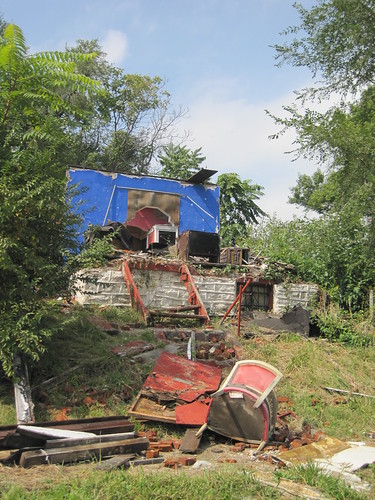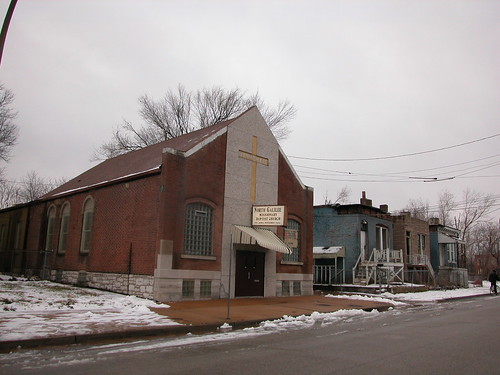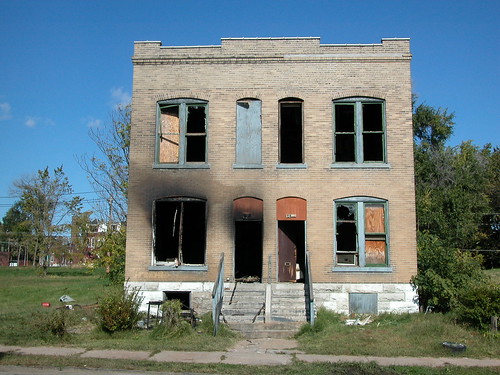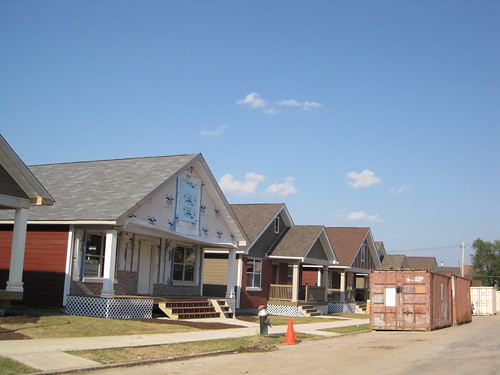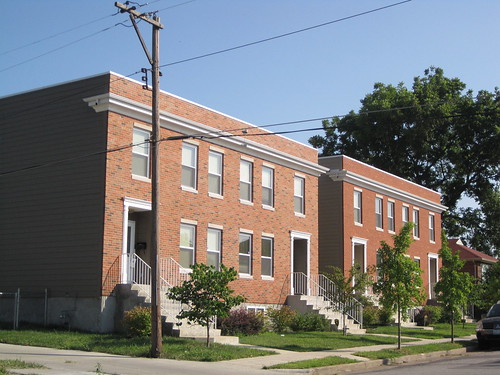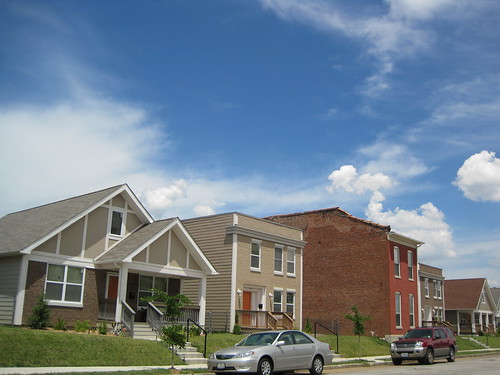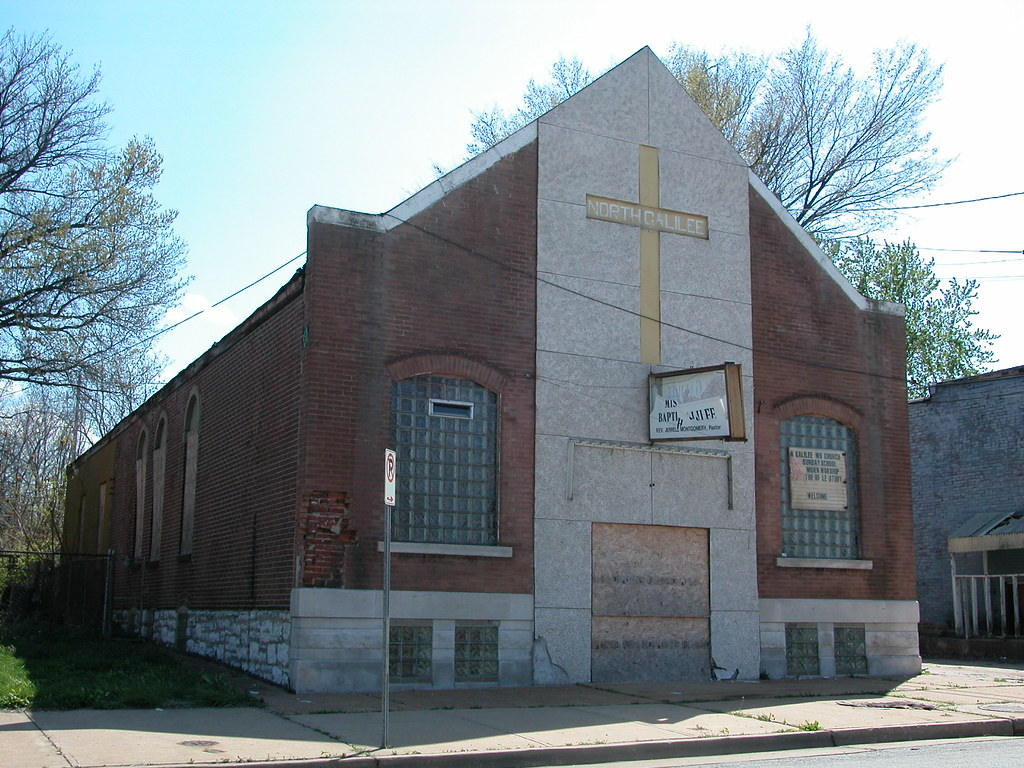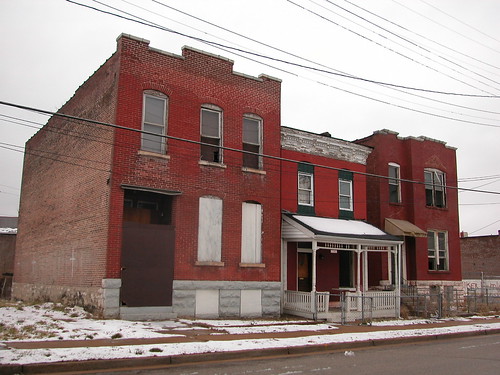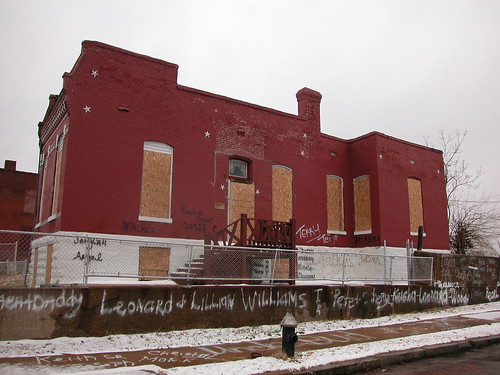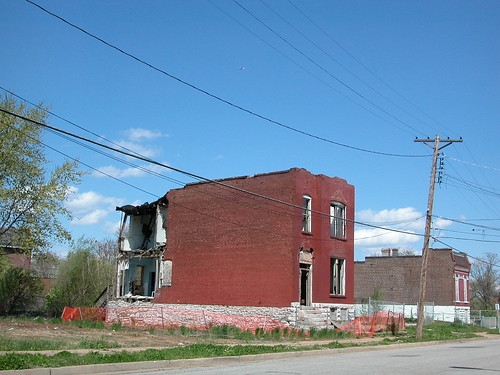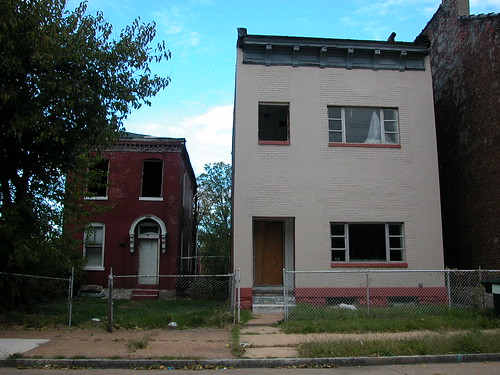by Michael R. Allen
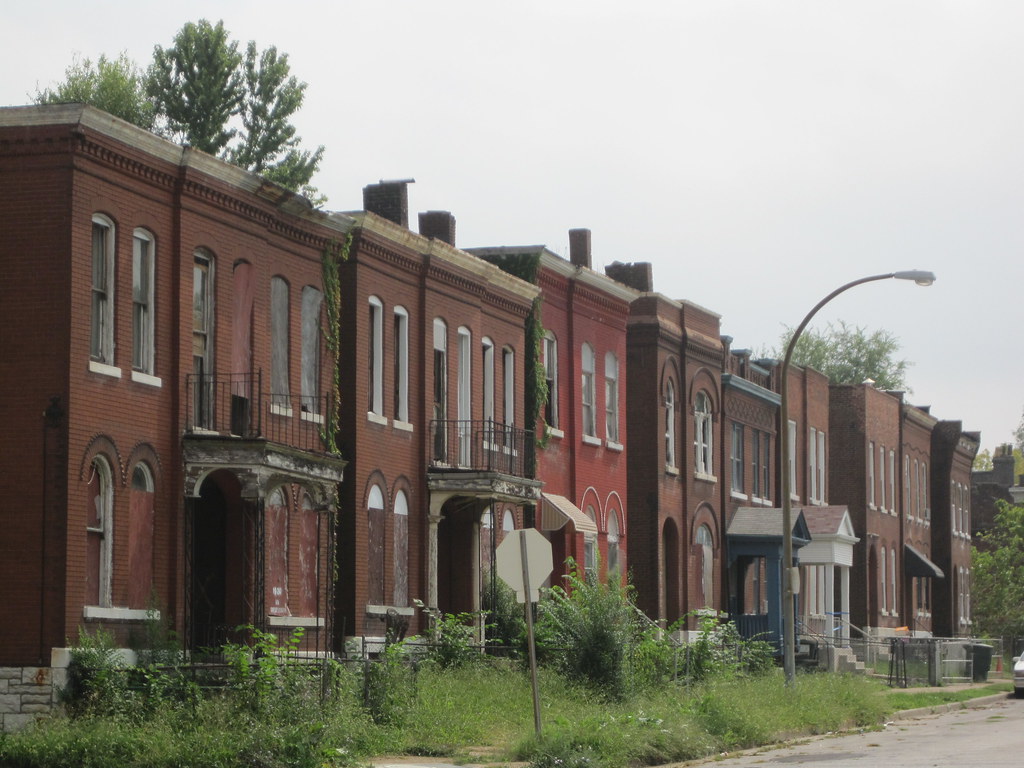 I have been working on an architectural survey in JeffVanderLou (details to come) and wanted to share some images from the area just west of Parnell and north of Cass avenues. This is a neat urban pocket filled with historic buildings dating from 1870 – 1910 that is located in the fourth phase of the proposed NorthSide project. There is the abandonment and building loss typical of this neighborhood, JeffVanderLou, but the level of historic integrity remaining is actually strong. A historic district is certainly possible here.
I have been working on an architectural survey in JeffVanderLou (details to come) and wanted to share some images from the area just west of Parnell and north of Cass avenues. This is a neat urban pocket filled with historic buildings dating from 1870 – 1910 that is located in the fourth phase of the proposed NorthSide project. There is the abandonment and building loss typical of this neighborhood, JeffVanderLou, but the level of historic integrity remaining is actually strong. A historic district is certainly possible here.
The image above shows one of the most splendid rows in the area: the 1700-1800 block of Leffingwell Avenue, just south of North Market. This intact street wall faces Yeatman Park (which, by the way, happens to have excellent tennis courts). Of course, this photograph shows that the four of the eight buildings at the left are vacant. However, only one of these buildings is owned by a holding company controlled by McEagle Properties LLC. Three are owned by the city’s Land Reutilization Authority (and likely to be purchased by McEagle) and the corner unit of the corner building is owned by one Hillmon Bonds.
This image cuts against the stereotype that the NorthSide area is an urban prairie with a few decrepit houses here and there. This is a block of historic homes comparable to blocks found across the city, with as many houses occupied as vacant. Every time I am on this block, people are around tending to their yards or cars. While the fates of the four vacant houses concerns this architectural historian, those fates concern the residents and owners of the remaining four buildings even more.
Take away half of this row, and what is left is diminished. The quality of life on this block would be much improved if the vacant houses were again occupied by families. The difference between a fully occupied row of historic homes facing a lovely city park and a group of isolated survivors ringed by vacant lots could not be more stark.
 There is a flounder-style house at 2627 Howard Street. Flounders are indigenous to St. Louis, Philadelphia and Alexandria, Virginia, and feature a roof slope (sometimes hipped) that runs from one side of the building to the other. The origin is unknown and the prevalence unaccounted for. All we know is that these are a precious American architectural resource. This one is owned by Dodier Investors LLC, a McEagle holding company.
There is a flounder-style house at 2627 Howard Street. Flounders are indigenous to St. Louis, Philadelphia and Alexandria, Virginia, and feature a roof slope (sometimes hipped) that runs from one side of the building to the other. The origin is unknown and the prevalence unaccounted for. All we know is that these are a precious American architectural resource. This one is owned by Dodier Investors LLC, a McEagle holding company.
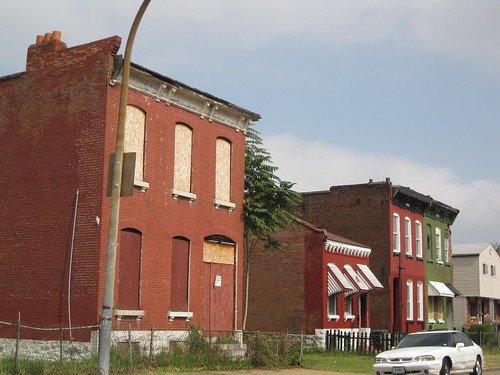 The rest of this block of Howard is the typical mix of vacant and occupied for the neighborhood. This photographs shows a typical density of remaining historic resources — too dense to ignore. Second from left is a one-story flounder house that is occupied. Once again, we see that historic preservation planning in the NorthSide project is crucial. Preservation here is preservation of the livability of whole city blocks.
The rest of this block of Howard is the typical mix of vacant and occupied for the neighborhood. This photographs shows a typical density of remaining historic resources — too dense to ignore. Second from left is a one-story flounder house that is occupied. Once again, we see that historic preservation planning in the NorthSide project is crucial. Preservation here is preservation of the livability of whole city blocks.



